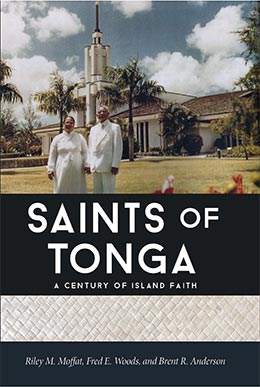Epilogue: Commemorative Events since 1991
Riley M. Moffat, Fred E. Woods, and Brent R. Anderson, "Epilogue: Commemorative Events since 1991," in Saints of Tonga (Religious Studies Center, Brigham Young University; Salt Lake City: Deseret Book, 2019), 367–382.
Beyond the Centennial
Following the centennial commemoration in Tonga, the Church continued to grow, and news of Tongan Saints’ tremendous faith extended beyond their borders. This was no doubt influenced by Eric Shumway’s 1991 release of Tongan Saints: A Heritage of Faith, a compilation of inspiring Tongan Latter-day Saint stories. A distillation of this work found an even wider audience several years later in 1995 when the Church’s Ensign magazine published Shumway’s piece “Tonga: A Heritage of Faith,”[1] potentially seen by hundreds of thousands of members.
In the year that Tongan Saints was published, Queen Halaevalu Mata‘aho of Tonga made a visit to Church headquarters at the invitation of Elder Russell M. Nelson. She arrived in Salt Lake City in early December and stayed for nearly a week. She met with Presidents Gordon B. Hinckley and Thomas S. Monson. The queen also toured a number of Church facilities, including the BYU campus and the Provo Missionary Training Center. While on the BYU campus, she also gave an address on the role of women in the Kingdom of Tonga.[2]
On August 2, 1996, President Gordon B. Hinckley and President Thomas S. Monson, First Counselor in the First Presidency, met with members of Tonga’s royal family at Church headquarters in Salt Lake City. During the meeting, President Hinckley expressed gratitude to the king for all he did for the people of Tonga. Attending the meeting were King Taufa‘ahau Tupou IV, Queen Halaevalu Mata‘aho, Princess Pilolevu Tuita, and Princess Mele Siu‘ilikutapu Kalaniuvalu-Fotofili. Elder Joseph B. Wirthlin of the Quorum of the Twelve Apostles and Elder Alexander B. Morrison of the Seventy also attended.[3]
The following year, there was a large celebration under the direction of the Liahona Alumni Association to commemorate the fiftieth anniversary of Liahona High School, which had been operating from 1947 to 1997. Five thousand people participated in the celebration. Sitalaiti “Star” Lotulelei, Church Educational System country director, highlighted the fact that Liahona High School brought many alumni into the Church who learned the gospel, gained a testimony in seminary, and prepared for missions and temple marriages as well as for higher education and careers. Lotulelei proclaimed that 80 to 90 percent of its male graduates serve missions each year.[4] None of the other Church secondary schools can match this. Queen Mata‘aho pleaded with the alumni to follow the example of Liahona High School and of The Church of Jesus Christ of Latter-day Saints to strengthen the family.[5]
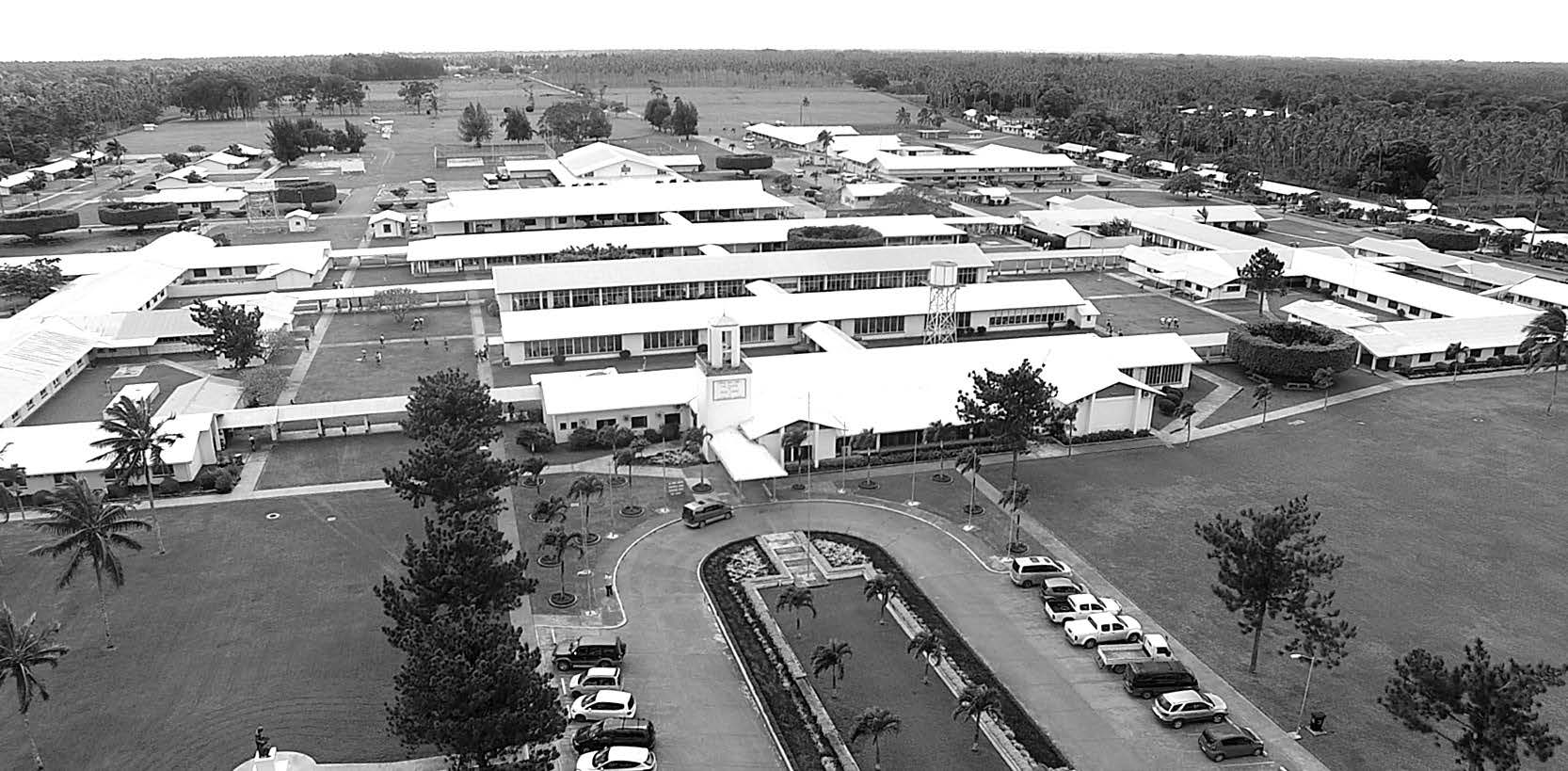 Aerial view of Liahona High School. Courtesy of Martin Anderson.
Aerial view of Liahona High School. Courtesy of Martin Anderson.
The Saints in Tonga participated in the Church’s worldwide celebration of the sesquicentennial of the 1847 arrival of the pioneers in the Salt Lake Valley. As part of that celebration President Gordon B. Hinckley toured the Pacific Islands with Elders Joseph B. Wirthlin and Vaughn J. Featherstone. On October 14 President Hinckley visited Tonga and met with King Taufa‘ahau Tupou IV. He then spoke to 11,400 people gathered at the sports field at Liahona High School. “My message to you today is to live the gospel,” President Hinckley said. “Cultivate in your hearts a testimony and a love for God, your Eternal Father. We sing, ‘I am a child of God.’ That isn’t just a figment, a poetic figment—that is the living truth. There is something of divinity within each of us, my brothers and sisters, that needs cultivation, that needs to come to the surface, that needs to find expression.”
The next morning President Hinckley and his party flew to Vava’u to address about 2,200 people at the Saineha High School sports field. President Hinckley asked, “You men who hold the priesthood of God, are you living worthy of it? Are you living in such a way that the power of the Almighty may be expressed through you? Are you the kind of husband that you ought to be to your wife? Do you speak to her with kindness, respect, and love?”[6]
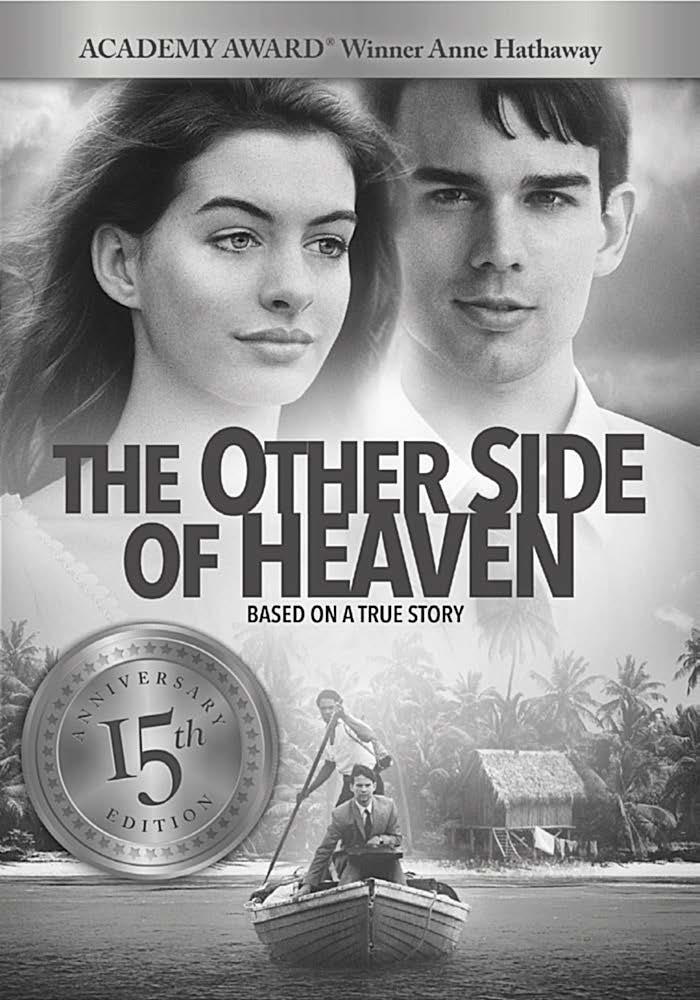 The cover of the The Other Side of Heaven 15th anniversary edition.
The cover of the The Other Side of Heaven 15th anniversary edition.
As the new millennium dawned, the exemplary faith found in the Kingdom of Tonga, not only of Latter-day Saints but also of the country as a whole, continued to receive Church attention. For example, in another Ensign article titled “Land of Believing People,” Elder Pita Hopoate, an Area Authority Seventy and director of Church schools in Tonga, noted, “King Taufa‘ahau Tupou IV emphasizes keeping the Sabbath day holy, so Tongans go to church on Sunday.” He also pointed out the parallels between Tongan culture and the Latter-day Saint faith. “Family comes first to us. Mother, father, children, grandparents, uncles, aunties, cousins, nieces, nephews are all called family, not relatives.” Elder Hopoate reasoned further, “The Church emphasizes family, and this is one reason the Church is growing.” By 2001 a quarter of the kingdom’s population were active Church members—the greatest percentage of Latter-day Saints of any country in the world.[7] Two years later, more than 20,000 members gathered for a conference in sixteen locations across Tonga; they rejoiced when they were able to participate in the live satellite transmission from Church headquarters for the first time.[8]
The faith of the Tongans was also captured near the close of 2001 through a popular motion picture directed and produced by Latter-day Saint filmmaker Mitch Davis. Davis produced the film The Other Side of Heaven, based on the book In the Eye of the Storm, by Elder John H. Groberg, telling inspiring stories from Groberg’s mission to Tonga in the 1950s.[9] It highlighted not only the faith of the Tongan people but also some natural hazards they face as islanders, such as earthquakes, tsunamis, tropical cyclones, and drought.
Rededication of the Temple
Perhaps the most salient event of the decade was the renovation and rededication of the Nuku‘alofa Tonga Temple, which was closed from June 2006 until early November 2007. This was necessitated by the heavy use of the faithful Tongan temple goers.[10] President Shumway observed that this period was one of civil unrest that coincided with the temple closure. He noted, “The political turmoil in Tonga after the death of King Taufa‘ahau Tupou IV in 2006 was driven by a powerful ‘democracy movement’ with the goal of forcing the monarchy and the nobles to give up certain powers to the people.” As he further noted, one general Church leader over the Pacific region believed that with the closure of the temple, it appeared that the powers of Satan increased in the Kingdom of Tonga.[11] Yet the temporary closure was essential because the increasing number of temple attenders required additional space. The temple was enlarged from 14,572 square feet to 21,184 square feet.[12] This special time of renewal and rededication included a cultural celebration held on November 3, 2007. In addition, forty thousand visitors toured the renovated temple three weeks prior to the rededication.[13]
Mission president Lynn McMurray, known as “Makamaile,” recalled a special experience before the temple was rededicated. When Her Royal Highness Princess Pilolevu Tuita toured the temple during the open house, she was so touched by the spirit of the temple that she asked President Shumway if she could come back at another time after the official open house but before the rededication and just sit in the celestial room for a while to feel of the beautiful spirit there. And so she did.[14]
Ainise Sevele, wife of the Tongan prime minister, Feleti Sevele, said, “My visit to the temple was a personal journey into the realm of all that is holy, which is peace, serenity, hope, happiness, and joy.”[15] A cultural celebration involving 2,400 young people was held on November 3. The rededicatory sessions were held November 4 under the direction of Elders Russell M. Nelson of the Quorum of the Twelve and Spencer J. Condie of the Seventy.
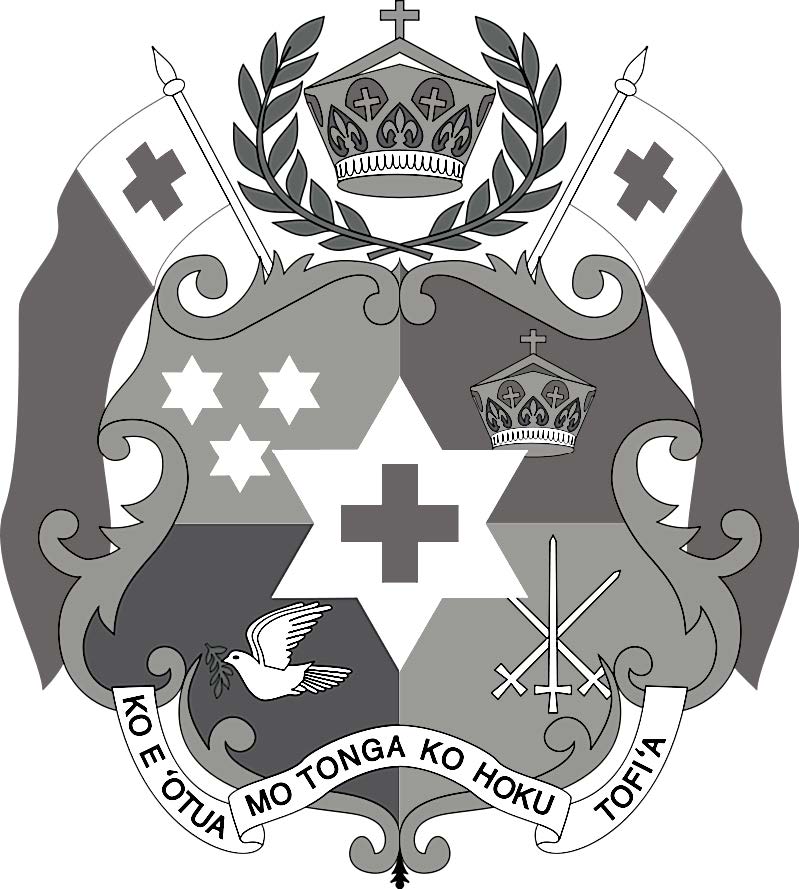 Royal seal of the Kingdom of Tonga. Wikimedia.
Royal seal of the Kingdom of Tonga. Wikimedia.
Concerning this sacred event, Elder Nelson, who had offered the dedicatory prayer, said, “We reaped the harvest today of seeds that had been sown by the king of Tonga, who gave the land to the Lord in the first place.” Another comment echoing this theme was made by President Shumway, who had returned just months before to serve in Tonga as temple president. He said, “The dedication—the giving of a temple and its people back to God through covenant—is at the heart of the tradition.”[16]
During the services, President Shumway, who along with Elder John Groberg probably understands Tonga and the Tongan people better than any other palangi, mentioned the events at Pouono in Neiafu in 1839 when Taufa‘ahau, later King George I, said, “O, God the Father, I give unto you my land and my people and all generations of people who follow after me. I offer them all to be protected by heaven.” Then President Shumway compared that earlier event to this sacred occasion: “The giving of a temple and its people back to God through covenant . . . is at the heart of the tradition that extends to 1839.” Referring to the motto of Tonga—God and Tonga Are My Inheritance (Koe ʻOtua mo Tonga ko Hoku Tofiʻa)—he added, “The core of your identity as a Tongan is that you are given to God and this land is given to God, so God and Tonga become your inheritance.”[17]
Prior to the rededication, in July 2007 a group called the UHO ‘o Tonga Historical Society, under the leadership of Viliami Toluta‘u, held a conference commemorating the centennial of the return of LDS missionaries to Tonga in 1907. Meetings and activities were held in Vava‘u, Ha‘apai, and Tongatapu culminating in the unveiling of a monument created by Brother Toluta‘u at the royal cemetery at Paepae ‘o Telea in Lapaha, Mu‘a, in honor of Tupou Moheofo (1871–1918), granddaughter of King George I and sometimes mentioned as a wife of King George II. She was also the first member baptized in Nuku‘alofa on July 15, 1911, and is the great-great-grandmother of both King Tupou VI and Queen Nanasipau‘u through different lines. The Queen Mother, Queen Mata‘aho, attended the unveiling and spoke emotionally of her ancestor.[18]
During 2007 the new triple combination of Latter-day Saint scriptures—consisting of the Book of Mormon, the Doctrine and Covenants, and the Pearl of Great Price—was made available in the Tongan language.[19]
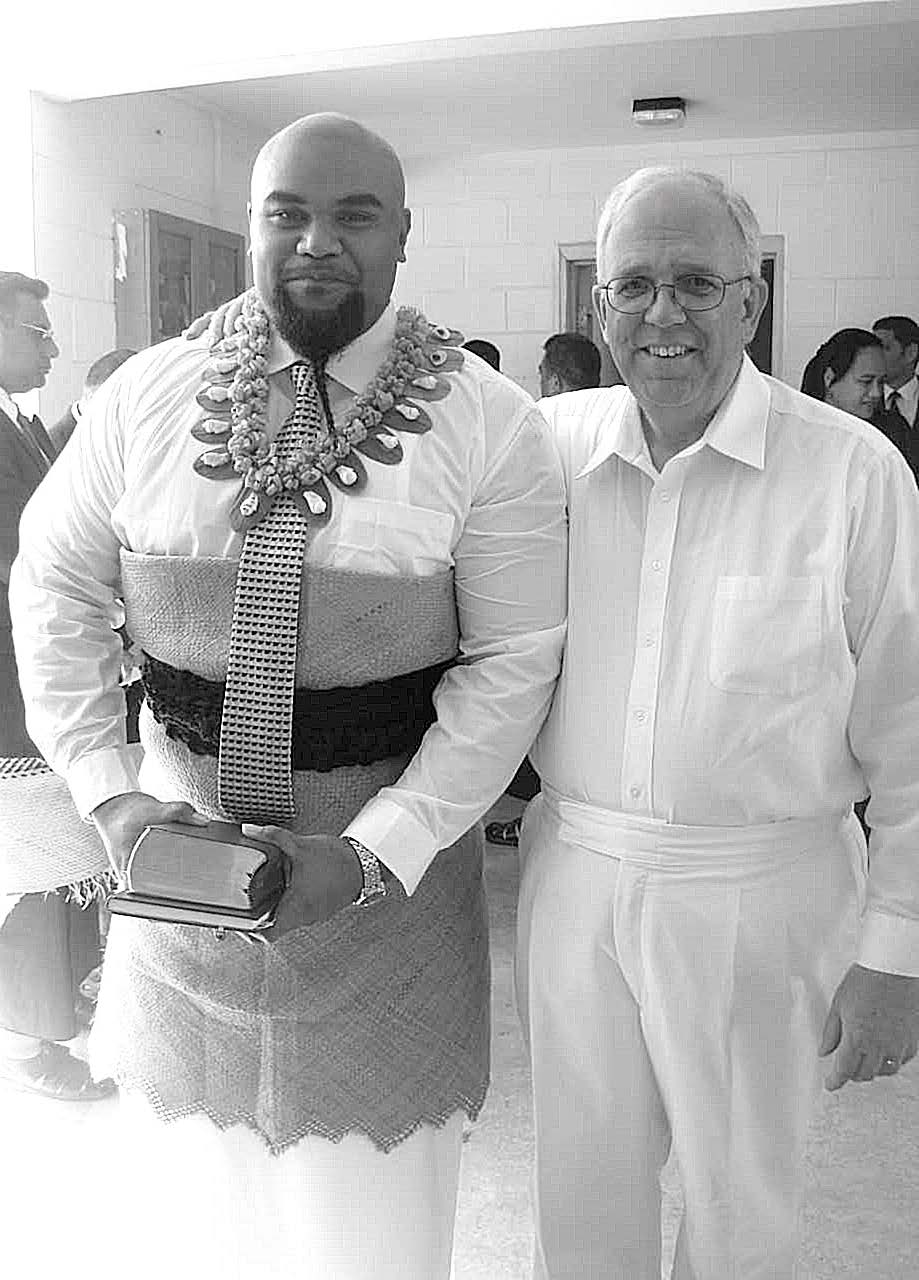 Lord Fulivai and President Lynn McMurray at Lord Fulivai’s baptism. Lynn McMurray.
Lord Fulivai and President Lynn McMurray at Lord Fulivai’s baptism. Lynn McMurray.
One of the greatest strengths of the majority of Tongan Saints is that their conversion runs deep; not only is their faith unwavering, but their daily lives show that they are disciples of Jesus Christ. This outward discipleship is noticed by those around them who may be seeking the peace, happiness, and virtue they see in them. An example of faithful members influencing others to learn about and accept the gospel of Jesus Christ is Lord Fulivai.
Lord Fulivai wanted to know why certain fellow members of the Tonga Rugby Board of Directors—Aleki Mataele, Palau Tumalo, and Semisi Sika—were different. They explained the plan of salvation and the priesthood to him. Then Brother Sika invited him to a fathers’ and sons’ camp, and Lord Fulivai saw the gospel in action, how it brought families together. It was something he wanted in his life. Lord Fulivai then spent time with the Mataele family to observe how a Latter-day Saint family functioned.
President McMurray and his wife were invited to teach the Fulivai family and were blessed to be able to baptize and confirm them in 2010, assisted by President Shumway and Lord Tu‘ilakepa, also a member. The beautiful connection here is that Lord Fulivai’s great-grandfather was Iki Tupou, who had befriended Samoan Mission president Thomas Court when he came to Vava‘u in 1907 and was later baptized. Then Tupou was instrumental in sending the missionaries to Tongatapu in 1911 to talk to Aleki Mataele’s ancestor, Chief Siosaia Mataele of Fo‘ui, who became a member of the Church. Now a Mataele had returned the favor by helping bring the gospel back to the Fulivai family.[20]
Commemoration of the Creation of the Tongan Mission
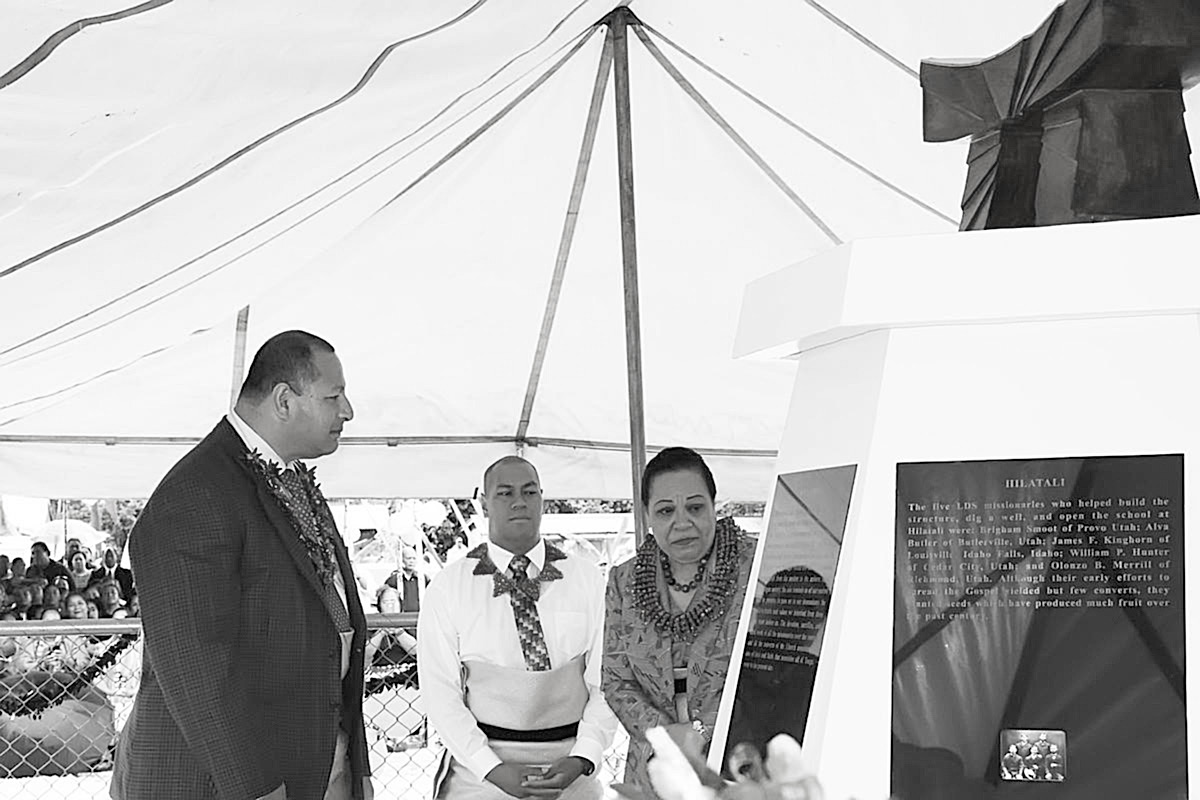 His Majesty King Tupou VI and Queen Nanasipau‘u with their son, Prince ‘Ata, admire the monument unveiled at Hilatali in Mu‘a. Kenneth Mays.
His Majesty King Tupou VI and Queen Nanasipau‘u with their son, Prince ‘Ata, admire the monument unveiled at Hilatali in Mu‘a. Kenneth Mays.
In 2016 the Tongan Mission commemorated the centennial anniversary of its creation in 1916. As part of the festivities, on August 8, 2016, His Majesty King George Tupou VI and Her Majesty Queen Nanasipau‘u took part in the unveiling of a monument created by sculptor Viliami Toluta‘u and Elder ‘Aisake Tukuafu commemorating the first Latter-day Saint missionaries to Tonga. The monument was placed on the property of the first Latter-day Saint missionary residence that was built in 1892 at Hilatali in Mu‘a. Prince Tungī Mailefihi Tuku‘aho graciously permitted the monument to be erected on his land. This event marked the official start of a weeklong celebration that included a beautiful devotional and gift giving at the palace. Notwithstanding the rainy cold weather, three thousand youth dressed in vibrantly colored costumes danced before the royal family at a cultural celebration. The varied dances depicted Church growth in Tonga and throughout the islands of the Pacific.[21] On the island of Vava‘u, a parade also passed through the streets of Neiafu to commemorate the centennial.
One wonderful Protestant Tongan who caught the spirit of the celebration was Siokatame Tupou. Tupou was the bandmaster of the local Methodist school who decided to support the celebration by having his students march in the parade, knowing that the Latter-day Saint school Saineha did not have a band at that time. After asking permission from his principal, he pulled his boys together, and they not only learned some of the Latter-day Saint hymns but also dressed in the green and white Saineha school colors when they marched.
He remarked, “We met our Lord with the Latter-day Saint people.” Tupou also noted that he was raised a Methodist but had lots of family who were members of The Church of Jesus Christ of Latter-day Saints. Tupou stated, “I respect them and the Church. It’s good to work together in Vava‘u.” He added, “When we finished marching, my boys were happy, . . . and all the Free Wesleyan church, they were happy too. . . . So in Vava‘u, . . . our faith is good. It’s good for us to work together with the Latter-day Saints people.”[22]
Camp Makeke
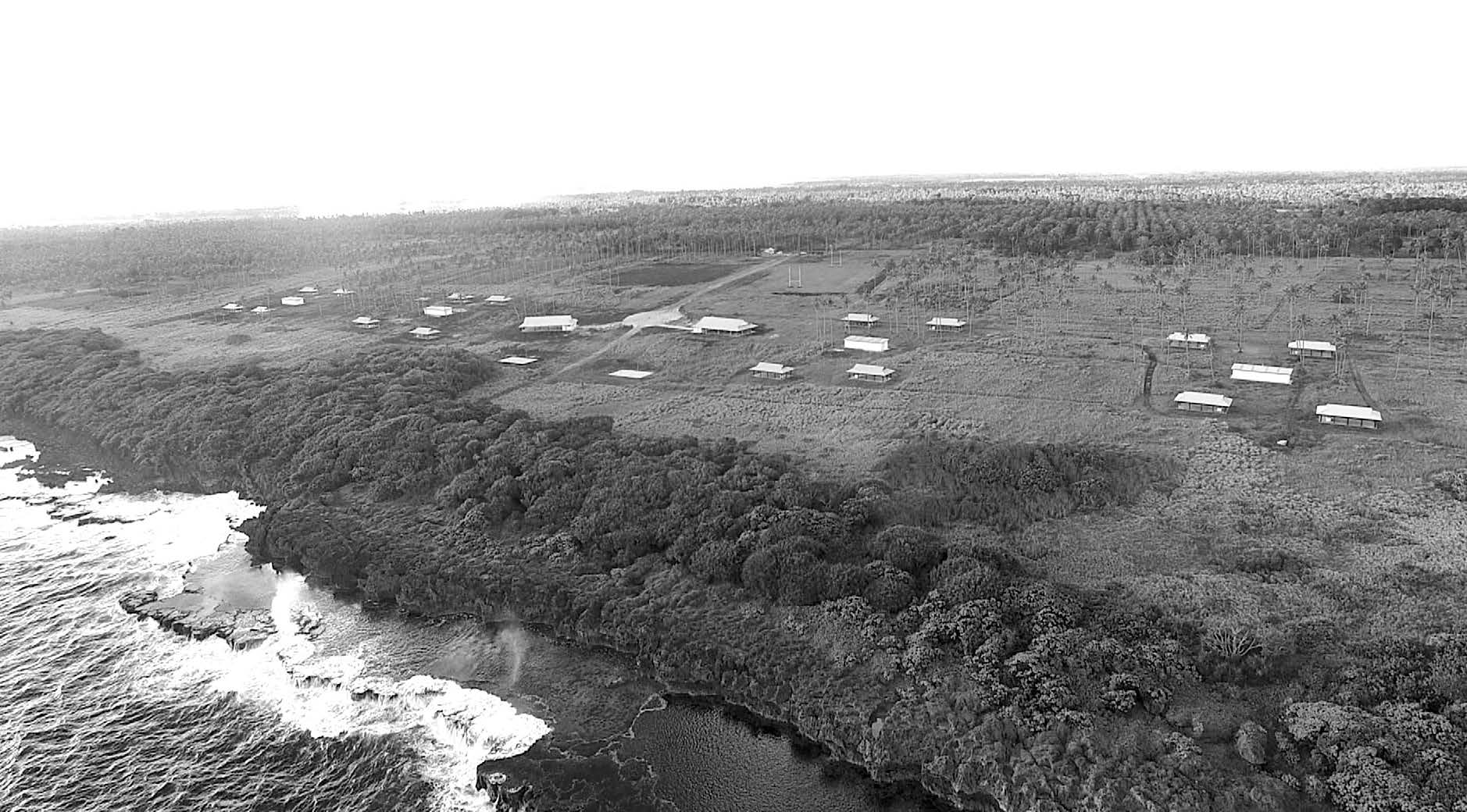 Aerial view of Makeke Camp. Courtesy of Martin Anderson.
Aerial view of Makeke Camp. Courtesy of Martin Anderson.
The most recent blessing for the Saints of Tonga has been the development of Camp Makeke. Modeled after the Church’s new campgrounds at Tuhikaramea in New Zealand and Sauniatu in Samoa, the project was initiated by the Pacific Area Presidency. The land lease for Makeke was renewed for another ninety-nine years, and design and construction began in 2016. Four hundred old coconut trees were removed, and rugby and soccer fields were built, along with permanent fale and two large pavilions.
The government wanted the coconut trees replaced, so in February 2017 Elder Dale and Sister Ruth Renlund, Elder Donald and Sister Diane Hallstrom, Bishop Gérald and Sister Valerie Caussé, Elder Vincent and Sister Peggy Ann Haleck, Elder ‘Aisake and Sister Lose Kinikini Tukuafu, and the stake presidents began planting new coconut trees. This was particularly meaningful for Sister Ruth Renlund, whose mother was born in Tonga when her grandfather Jay Cahoon was mission president from 1926 to 1928. In addition, her grandfather had actually participated in planting some of the original coconut trees when Makeke College was being developed. The camp’s Facebook page shows that Church youth and young single adult groups are making good use of the camp.[23] Elder Tukuafu reports that “the future of this camp will bless many lives.”[24]
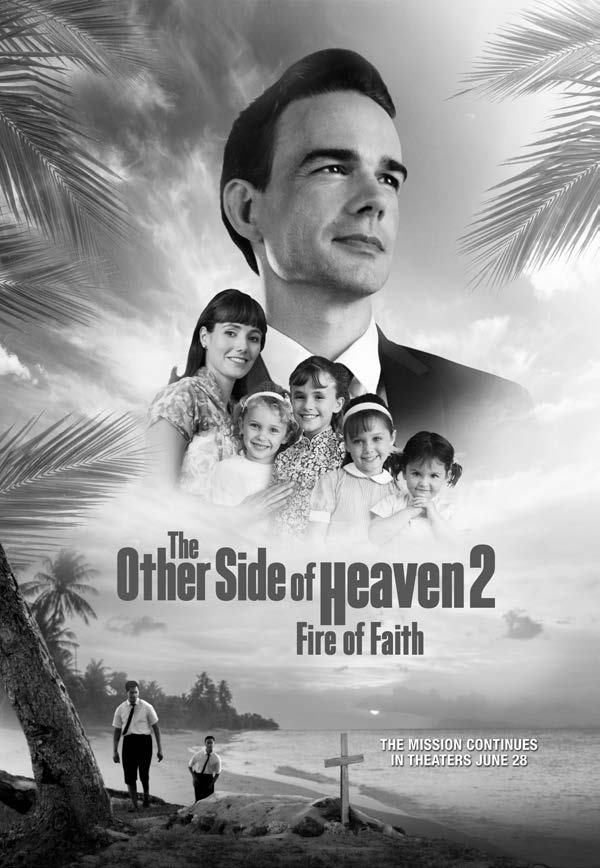 Poster advertising the movie The Other Side of Heaven 2: Fire of Faith. Deseret Book.
Poster advertising the movie The Other Side of Heaven 2: Fire of Faith. Deseret Book.
In 2019 another noteworthy event brought global attention to the small Kingdom of Tonga. This was the release of the motion picture The Other Side of Heaven 2: Fire of Faith, a sequel to the first movie; this second movie focuses on the years Elder Groberg was a mission president. This film again brought the attention of the world to the remarkable faith of the Tongan people.
Conclusion
The Church of Jesus Christ of Latter-day Saints is stable and growing in the Kingdom of Tonga. Church statistics for 2018 reveal 106 chapels, 21 stakes, 168 congregations, 20 family history centers, one mission, and one temple, as well as two high schools and five middle schools. As of 2018 fully a third of the kingdom are active members of the Church.[25] This is remarkable, as the total population of Tonga is approximately 109,325 people.[26] There are also over two hundred young Church missionaries and thirty senior missionary couples working with those who are less active and sharing the message of the restored gospel to the rest of the kingdom.[27] Further, this percentage marks the highest percentage of Latter-day Saints on record in any country in the world. Not only do the tens of thousands of Saints living in Tonga have a great impact on their country, but Latter-day Saint Tongans living elsewhere have influenced the faith of the general body of the Church in scores of congregations wherever they are gathered globally.
Tongan academic Tevita O. Ka‘ili asserts that “the number of Tongans abroad are more or less [equal to] the number of Tongans living in Tonga.” As of 2018 there were 110 Tongan language wards and branches organized outside of Tonga in the United States, New Zealand, and Australia. This does not count the thousands of members attending English language wards and branches who would identify themselves as Tongan. Ka‘ili maintains that the Church “plays a vital role in the Tongan diaspora worldwide.”[28]
The Church in Tonga is known for its service and humanitarian activities. The Church and its members respond quickly to natural disasters such as Cyclone Isaac on March 3, 1982, Cyclone Ian on January 2, 2014, and Cyclone Gita on February 12, 2018. Cyclone Ian, with 140-mph winds, destroyed fifty Latter-day Saint homes on Ha‘apai. The Pacific Area Office in Auckland, New Zealand, quickly sent relief, and thirty missionaries provided service on the affected islands. Cyclone Gita, with winds of 160 mph, affected Tongatapu the most. As the storm approached, Brother Semisi Sika, the acting prime minister, advised via radio that people needing shelter should go to the nearest Latter-day Saint meetinghouse that has been built to withstand cyclones; there is one in nearly every village in Tonga. History has proven that they are most likely the strongest structures in the villages. Afterward, Prince Ata donated eight acres of manioke (cassava) to help feed the people because most crops were destroyed. He said he had a responsibility to do all he could to make sure that no one would go hungry.[29]
The Church of Jesus Christ of Latter-day Saints continues to grow in Tonga. In April 2019 President Russell M. Nelson announced that a temple would be built in Neiafu, Vava‘u. This is a result of the Vava‘u Saints faithfully ministering to those beyond the veil and sacrificing to go to the temple on Tongatapu. It is also amazing to have a temple serving just four stakes in a group of islands with only fifteen thousand people. President Nelson also announced that two more Tongan men were called to be Area Seventies: ‘Inoke Kupu and Vai Sikahema. And because of their great desire to do missionary work, hundreds of young Tongan elders and sisters serve as missionaries, and several Tongan couples serve as mission presidents and companions around the world.
Tongan Saints are also a powerful example of individuals who display enduring faith, an ideal not only for all members of The Church of Jesus Christ of Latter-day Saints but for Christians throughout the world. The Tongan Latter-day Saint history reveals they are a God-fearing people who truly believe in their Creator and are serious about honoring his laws. Elder Groberg, who has spent many years ministering to the Tongan Saints, simply said, “We can learn from the faith of those people.”[30] This same theme was echoed via an apostolic blessing pronounced in Nuku‘alofa on local Saints at the centennial commemoration of the first missionaries to Tonga when Elder Russell M. Nelson, now Church President, prophesied “that from this island kingdom, faith may radiate through the entire world and affect the lives of people all over the world.”[31] This blessing has no doubt seen fulfillment over the past few decades and is certainly likely to find greater fulfillment in the years that lie ahead.
Notes
[1] Eric B. Shumway, “Tonga: A Heritage of Faith,” Ensign, August 1995, 32–37.
[2] See “Tongan Queen Visits Church Headquarters,” Church News, December 7, 1991, 3–4; and “Queen of Tonga Visits Church Auxiliaries,” Church News, December 14, 1991, 3, 10.
[3] See “Members of the First Presidency Meet with Tongan Royalty,” Ensign, November 1996, 107; and “Tonga’s Royalty Meets with the First Presidency,” Church News, August 10, 1996, 3.
[4] Sarah Jane Weaver, “Liahona High: A Foundation for Life,” Church News, September 13, 1997, 12.
[5] Weaver, “Foundation for Life,” 12.
[6] “Pacific Members and Heads of State Welcome President Hinckley,” Ensign, January 1998, 76.
[7] LaRene Gaunt, “Land of Believing People,” Ensign, September 2001, 42–43.
[8] “Satellite Link-up Connects 21,100 Tongan Members,” Church News, March 1, 2003, 5.
[9] Although the film was made on a low budget of only seven million dollars, it touched the hearts of many. For more details on this inspiring film, see R. Scott Lloyd, “Missionary Odyssey in Tonga Hits Silver Screen,” Church News, October 20, 2001, 4. Earlier that same year, Eric B. Shumway, BYU–Hawaii president, helped produce a documentary film about Tongan culture, Kava Kuo Heka! See “Sharing the Richness of Tonga,” Church News, January 13, 2001, 15.
[10] Sarah Jane Weaver, “Tongan Members Anxious to Do Lord’s Will,” Church News, November 10, 2007, 7.
[11] “The Beginning of Our Temple Service in Tonga, 2007–2010,” email from Eric B. Shumway to Fred E. Woods, October 31, 2018. Content in Shumway’s forthcoming book, Pilgrimage and Parable.
[12] “Open House in Tonga Attracts 40,000 Visitors,” Ensign, February 2008, 79.
[13] Sarah Jane Weaver, “LDS Tonga Temple Rededicated,” Deseret News, November 6, 2007. See Weaver, “Foundation for Life,” 8–9, 12.
[14] Lynn McMurray, interview by Brent Anderson and Riley Moffat, Salt Lake City, August 2018.
[15] “Open House in Tonga Attracts 40,000 Visitors,” 79.
[16] Sarah Jane Weaver, “Reaping Harvest in Pacific Paradise,” Church News, November 10, 2007, 3.
[17] Weaver, “Reaping Harvest,” 3–4.
[18] Nani Woods, Vava‘u, Kingdom of Tonga: Winwards in Tonga 1916–1919 (n.p., 2007), 107–8. See Christopher Buyers, “The Tupou Dynasty Genealogy,” www.royalark.net/
[19] “New Triple Combinations Available in Three Languages,” Ensign, July 2007, 79.
[20] Lord Fulivai, interview by Fred E. Woods and Martin Andersen, 2017. See McMurray, interview.
[21] “Tonga Celebrates Mission Centennial,” Church News, August 30, 2016; see Kenneth Mays, “Monument Helps Mark a Century of the LDS Tongan Mission,” Deseret News, September 2, 2016.
[22] Siokatame Tupou, interview by Fred E. Woods and Martin Andersen, 2017.
[23] See the Makeke camp Facebook page, https://
[24] Elder ‘Aisake Tukuafu, email message to Riley Moffat, October 30, 2018.
[25] “Tonga,” https://
[26] “Tonga Population,” http://
[27] Riley M. Moffat, “LDS Church History Sites in the Kingdom of Tonga,” Mormon Historical Studies 17, nos. 1–2 (2016): 217.
<>[28] Tevita O. Ka’ili, “Kāingalotu: Tonga Saints in the Diaspora,” Mormon Pacific Historical Society 28, no. 1 (2007), article 6, https://
[29] “Tongans Prepare for Food Shortage,” Church News, March 11, 2018, 2.
[30] “Tonga Cyclone Brings Destruction, Strengthens Faith,” Ensign, May 1982, 112.
[31] John Hart, “Celebrating 100 Years in Tonga,” Church News, August 31, 1991, 9.
